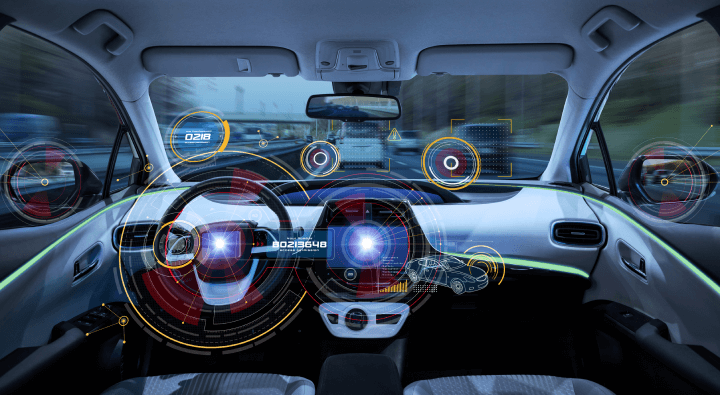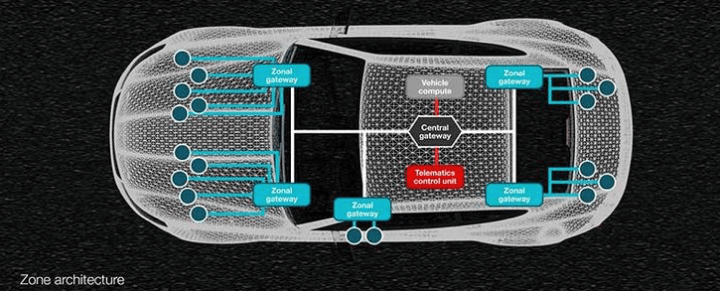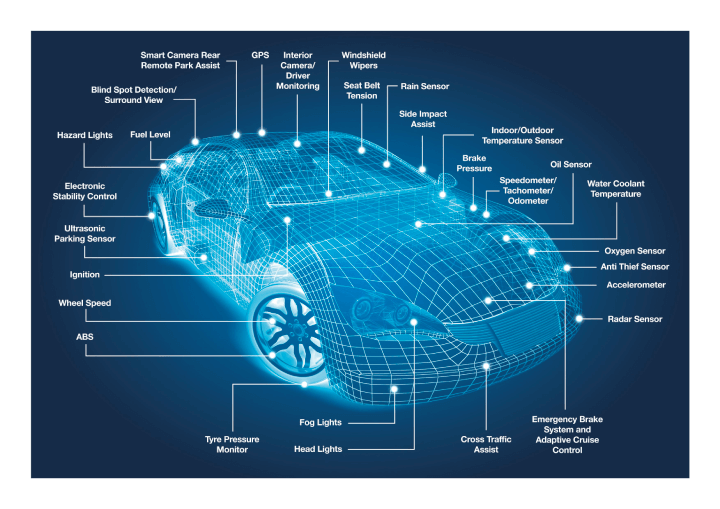The Rise of Software-Defined Vehicles: Changing the Face of Automobile Technology
25-05-2023 | By Paul Whytock
When is a car more like a mobile phone or laptop computer? The answer is when it’s a software-defined vehicle. In simple terms, this means a vehicle that can upload software upgrades just like a smartphone.
All of us are used to the idea that the best our cars will ever be is when they are new. They have all the latest gizmos and operating systems ranging from soothing in-car entertainment to cutting-edge critical safety items. Unfortunately, we are also used to the idea that the moment we drive our shiny new car away from the dealership, its value has taken a hit that can run into thousands of pounds.

The Rise of Software-Defined Vehicles
Software-defined cars may, to some extent, change all that. Owners could find themselves driving along and are notified that a system update has been made to their vehicle that will increase its efficiency when it comes to battery range or enhance its ability to anticipate potential collision dangers. In fact, updates to any internet-connected area of the vehicle’s operation could be subjected to upgrade at any time, thereby helping to maintain the value of the vehicle.
Take Tesla, for instance. The company has been a pioneer in the field of software-defined cars, regularly pushing out over-the-air software updates that not only improve the functionality of their vehicles but also add entirely new features. One such update improved the efficiency of their electric motors, leading to a 5% increase in range for existing owners. This is a prime example of how software-defined vehicles can maintain and even increase, their value over time.
Understandably car makers, dealers and the electronics industry see this as a natural progression of how technology will improve vehicle performance. And for the manufacturers of the hardware systems that make up a car, there is the long-term profit in designing and producing hardware that will be able to cope with life in the system-upgrade fast lane. And this in itself is no small challenge.
All of us are familiar with the wear and tear maintenance requirements of our cars, but creating a vehicle where braking system sensors, for example, have to be capable of dealing with performance upgrades and coping with these over a longer operating life is a design challenge in itself.
The Evolution of Vehicle Architecture: Zone Architecture
There is also the design challenge of how vehicles will progress from domain-structured software systems to a zonal architectural approach.
It is recognised that zone architecture is the way forward relative to software-defined vehicle design. It will prove a far more efficient way for all the many electronic control units (ECUs) in a vehicle to communicate. And is worth noting that some of today’s vehicles can have up to 150 ECUs, and that number is set to grow.
The automotive industry at large is recognising the benefits of this shift. For instance, several major automakers are transitioning from the traditional domain-based architecture to a zonal one. This move is driven by the need for more efficient communication between ECUs, a reduction in the amount of physical cabling, and the desire to cut costs and vehicle weight. Moreover, this transition facilitates the integration of advanced features and functionalities into vehicles, such as autonomous driving and sophisticated infotainment systems. As software-defined vehicles become more prevalent, we can expect to see an increasing number of automakers adopting zonal architecture in their designs.

When using a domain architecture design, ECUs are designated by whatever function they control within the vehicle but this changes with zone architecture. With this system, it is the position of the ECUs in the vehicle which is the defining factor. By taking this approach, more efficient communication systems can be implemented between all the different ECUs, which brings about benefits that include faster and higher performance levels of data communication and reductions in the amount of physical cabling connecting the ECUs, which in turn cuts vehicle costs and reduces weight.
Ensuring the vehicle’s hardware platform is future-proofed when it comes to system upgrades is a design conundrum. You’re asking designers to create hardware systems that will be able to cope with future operating requirements that aren’t even known at the time of their design.
The Role of Sensors in Software-Defined Vehicles
Prime amongst the hardware that future vehicles will rely on is the mass of sensors that feed information to systems throughout the car.
For example, look at just one such system; the automatic transmission control unit (TCU). Its job is to gather data from the sensors located in the vehicle and to interpret that information so the gear changes are made at the optimum moment. This can involve sensors that monitor vehicle and engine rotational speed as well as the accelerator pedal position. In addition to these, there are sensors that monitor how the engine’s air intake system is working, plus a transmission fluid temperature sensor which keeps a close electronic eye on oil and engine coolant temperature levels...and all this is so the car can change gear correctly. Learn more about the role of electronics in cars here. It is totally understandable that vehicle system architectures will require highly intelligent and integrated sensors. One estimate puts the amount of data an autonomous car will generate hourly at 4Terabytes, where 1Terabyte equals one trillion bytes. Consequently, some operational intelligence will transfer from ECUs to the sensors so they can take over some of the data processing load. This will require a level of computing competency in the sensors, but this may, in turn, have a cost advantage compared to running high-volume data transmission systems in the vehicle. Read more about rethinking car software and electronics architecture here.
It is totally understandable that vehicle system architectures will require highly intelligent and integrated sensors. One estimate puts the amount of data an autonomous car will generate hourly at 4Terabytes, where 1Terabyte equals one trillion bytes. Consequently, some operational intelligence will transfer from ECUs to the sensors so they can take over some of the data processing load. This will require a level of computing competency in the sensors, but this may, in turn, have a cost advantage compared to running high-volume data transmission systems in the vehicle. Read more about rethinking car software and electronics architecture here.
So designing capable sensors for future software-defined vehicles that have increased working lives thanks to system updates will to some degree, rely on predictive engineering coupled with probability perspectives. But given that it will always involve a crystal ball gazing element, it does mean software-defined vehicle progress will to some extent, be helped or hindered by developments in sensor capabilities.
Longevity and Environmental Considerations
My earlier question about when a car is more like a laptop or smartphone doesn’t totally apply. We all know that our phones and laptops may well be given a longer lifespan thanks to software upgrades, but we also know that they still have a recognised lifespan. You don’t really want a smartphone that’s older than five years!
But many drivers want their much-loved car to last a lot longer than that. And there is an important environmental aspect to vehicle longevity. It takes a lot of Earth resources to create a vehicle, and potentially reducing their life because system upgrades force hardware platforms into redundancy is not exactly an ecological triumph.
The market for automotive sensors is growing significantly, and so is their application in modern vehicle design. They cover operational areas such as temperature and positional sensing, oxygen sensors, speed sensors, inertial sensors, image sensing and safety and control applications.
Industry analysts vary in their figures defining the actual size and worth of the global automotive sensor market, but an average across three separate studies says the value will hit €50 billion in ten years’ time, which represents a CAGR of approximately 14.7%.

